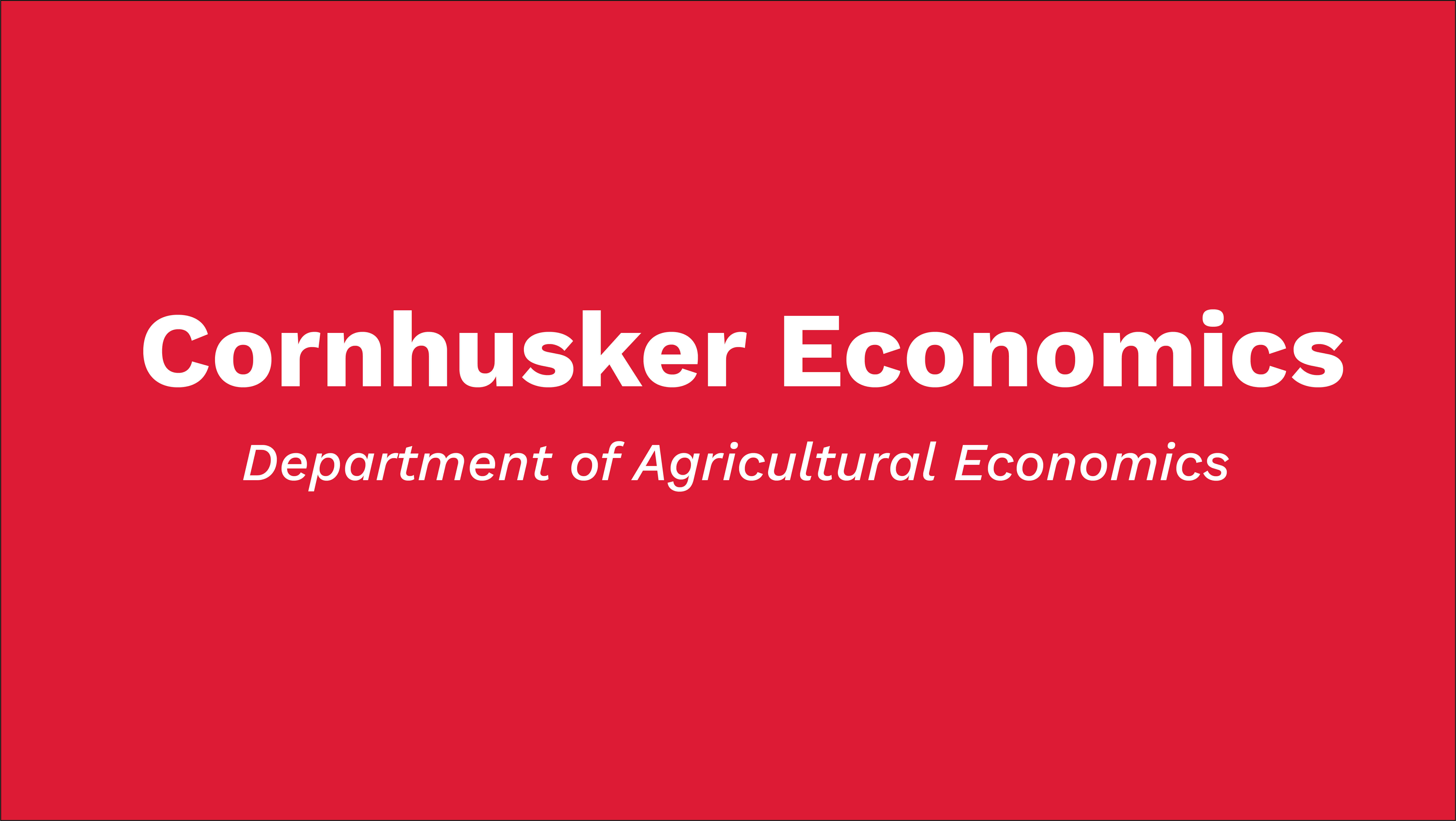By Glennis McClure
For the 2025 production season, 83 crop budgets were developed for Nebraska. These budgets show slightly lower per-unit costs compared to 2023 and 2024. The primary factor behind the reduction in input costs is the lower estimated costs of fuel and fertilizer. In most cases, machinery depreciation and opportunity costs remained relatively stable, while land values and rental rates increased slightly. Additionally, seed and interest costs also rose in the 2025 budgets. Budget scenarios for individual producers may vary depending on the timing of their input purchases and fluctuations in prices.
The Nebraska crop budgets are updated annually to serve as a resource for producers, agricultural managers, and professionals in developing their own enterprise budgets. These budgets provide valuable insights for identifying market opportunities using cost-of-production data, assessing input options, and making timely risk management decisions. Understanding projected enterprise costs can enhance confidence in the decision-making process.
Understanding an operation's risk exposure is essential. Knowing the per-acre investment required to grow crops helps determine the appropriate crop insurance coverage to protect that investment and may help determine additional risk management strategies if needed. Additionally, enterprise budgeting and risk analysis are vital for evaluating whether the operation can withstand a disaster or market shock.
Enterprise budgeting provides valuable insights, including the ability to compare the potential profitability of different enterprises. By identifying the most promising opportunities, producers can focus their time and resources more effectively. Another important use of enterprise budgeting is tracking production costs over time and benchmarking performance against other producers. This information supports decision-making on cost controls, production choices, machinery investments, and input selection.
Nebraska Extension crop specialists and economists annually prepare the University of Nebraska crop budgets. Crops in the 2025 budget reports include alfalfa, corn, dry edible beans, grain sorghum, grass hay, millet, peas, oats, soybeans, sugar beets, sunflowers, and wheat. With Nebraska a leading popcorn production state, 2nd only to Indiana, an irrigated popcorn budget was added in 2025. Due to current restrictions on the use of the dicamba herbicide, two soybean budgets were eliminated.
Using a consistent timeframe and historical data from 2016 onward, examples from two Nebraska corn budgets (one dryland and one irrigated), a dryland soybean budget, and a dryland wheat budget are analyzed. Graphs 1-4 and the accompanying tables summarize cash costs and total economic costs per bushel for each year. The crop insurance harvest price guarantee for each year is used as the reference price in these charts. Estimated profit margins per bushel are calculated by subtracting the total economic cost per bushel from the price per bushel. Since the 2025 crop insurance harvest price guarantees are not yet available, figures and estimated profit margins for 2025 are not included.
Graph 1
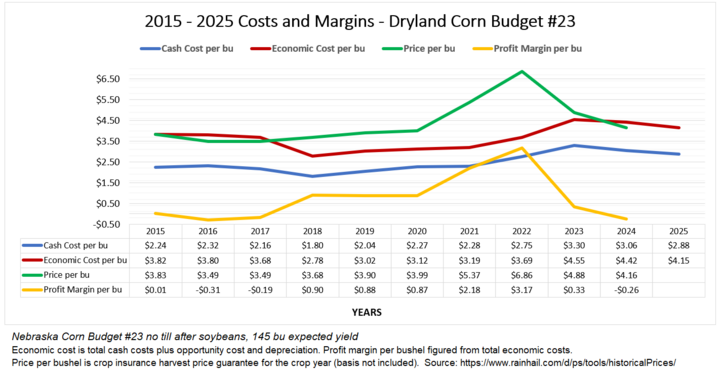
Graph 2
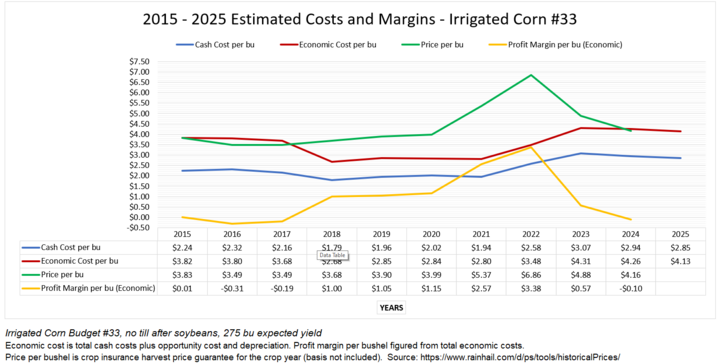
Graph 3
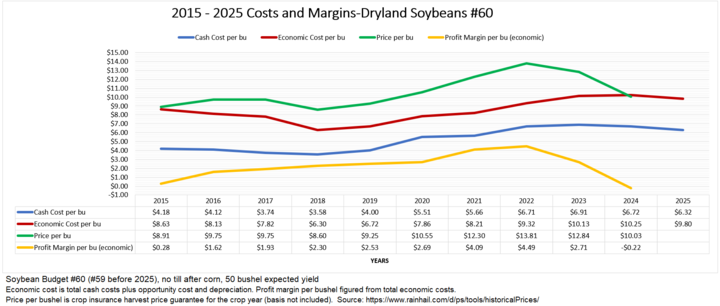
Graph 4
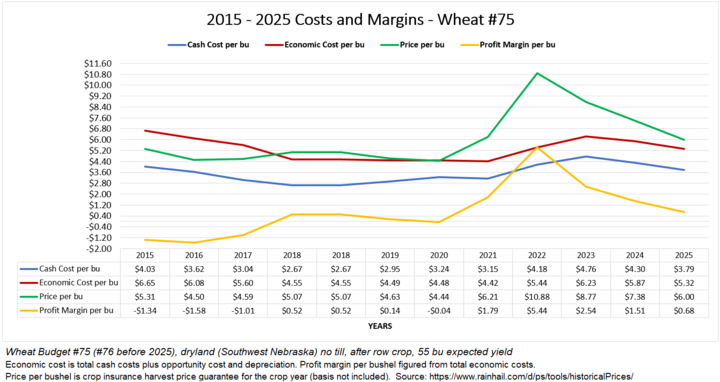
Glennis McClure
Extension Educator
Farm & Ranch Management Analyst
Department of Agricultural Economics
Center for Agricultural Profitability
University of Nebraska - Lincoln
gmcclure3@unl.edu
402-472-0661
